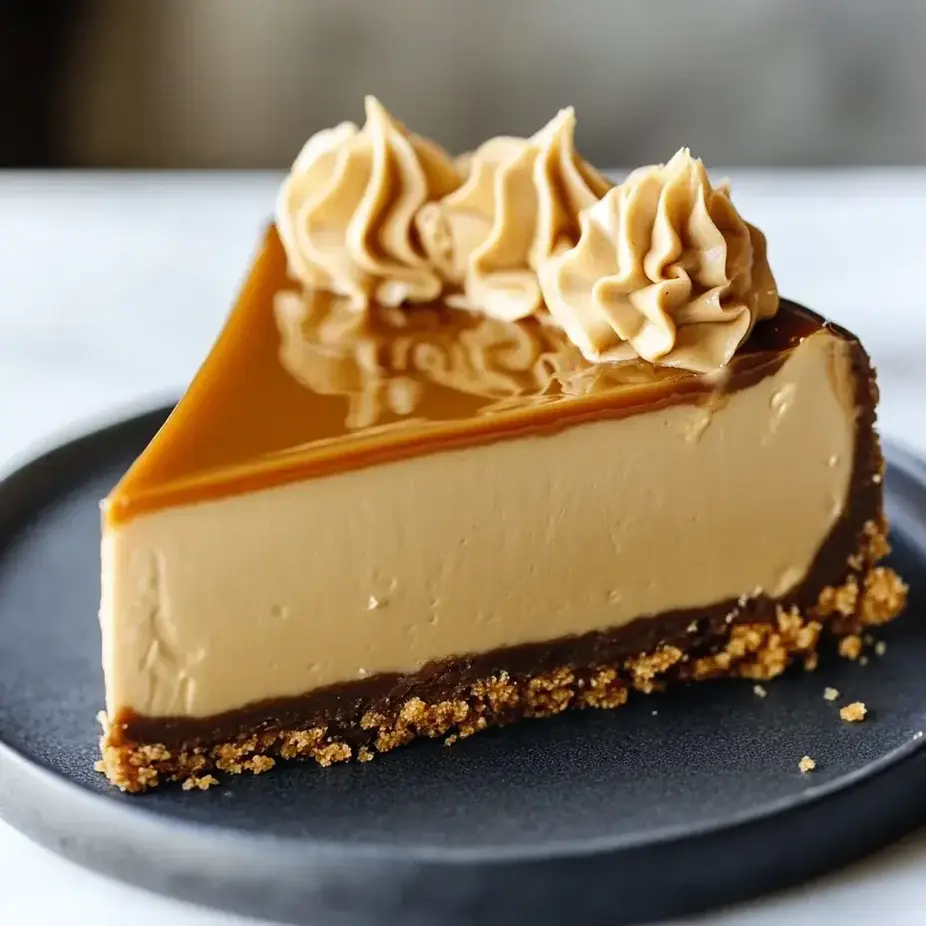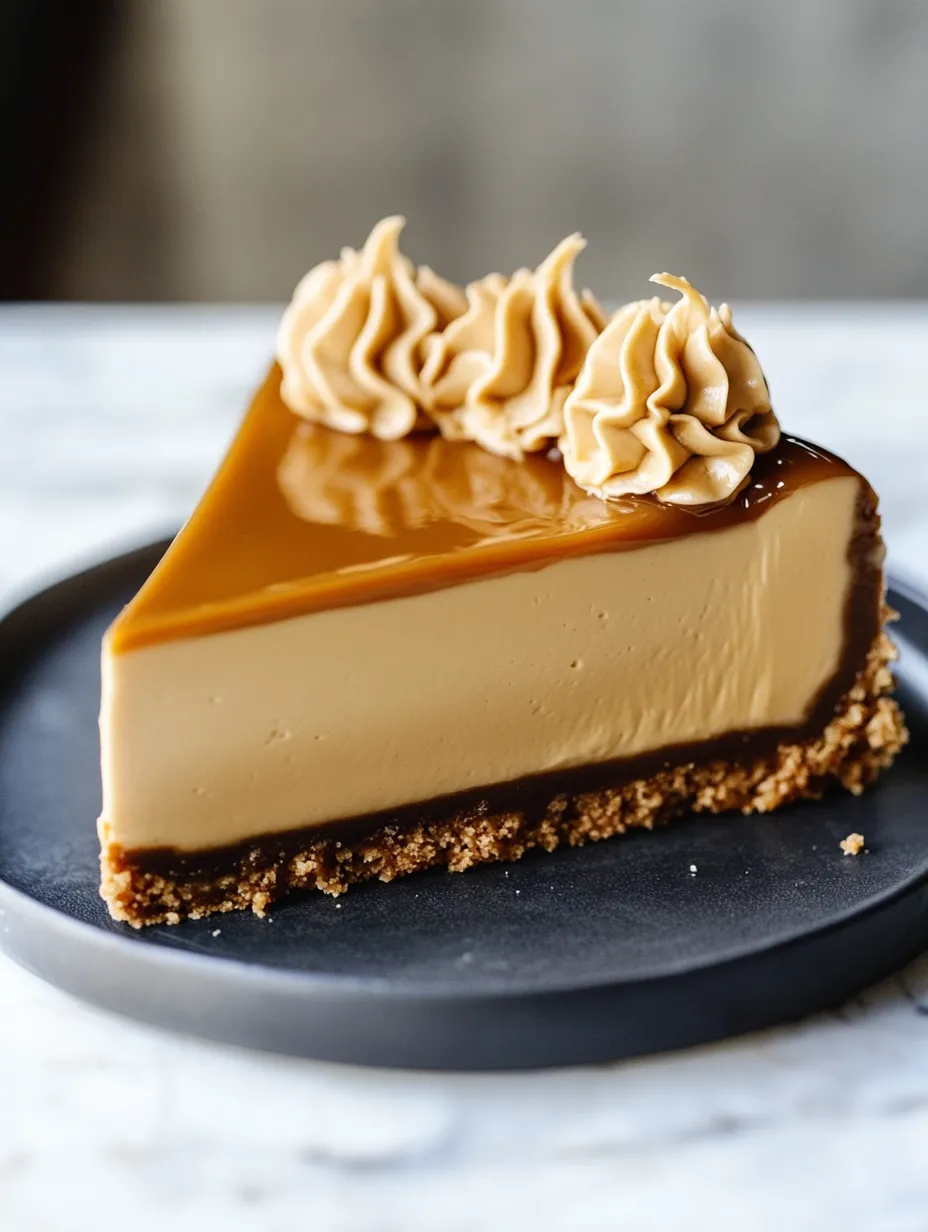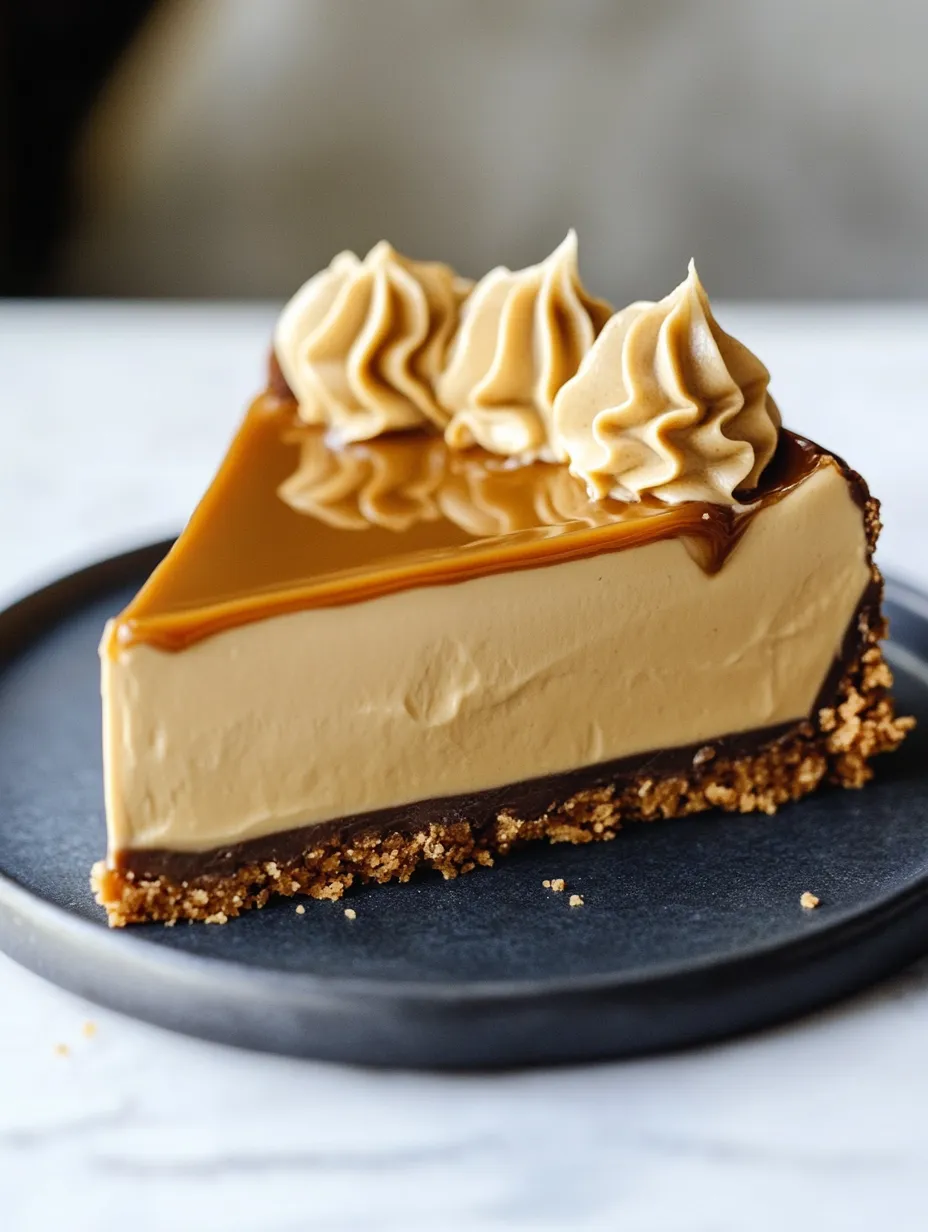 Save Pin
Save Pin
This butterscotch cheesecake blends the sweetness of brown sugar, smooth texture of cream cheese, and delightful butterscotch chips for a treat that feels comforting and satisfying. The mix of crunchy graham cracker base, silky middle, and shiny butterscotch topping makes a stunning dessert that's perfect for celebrating special moments.
I whipped up this cheesecake for my mom's birthday when she wanted something other than her typical chocolate cake. The second she tasted it, she closed her eyes in total joy, and we've used it for family celebrations ever since.
Ingredients
- Graham cracker crumbs: create a tasty foundation with their hint of honey and give a nice contrast to the smooth filling
- Unsalted butter: holds the crust together while adding flavor - try using fancy butter for extra richness
- Brown sugar: gives those deep caramel undertones that boost the butterscotch taste - go for dark brown for stronger molasses flavor
- Cream cheese: delivers that classic creamy tang - always go for full-fat at room temp for best results
- Sour cream: brings moisture and slight tanginess to balance out sweetness
- Butterscotch chips: fill every bite with sweet buttery goodness - pick quality ones with real butter listed
- Heavy cream: makes a velvety butterscotch topping - the fattier the better
Step-by-Step Instructions
- Prepare the Crust:
- Mix graham cracker crumbs, melted butter, and sugar until damp throughout. The mix should stick when squeezed but not feel too wet. Push firmly into your springform pan, using a measuring cup with flat bottom to make an even layer with slightly higher edges. When it turns golden brown after baking, you'll know the sugars have caramelized just right.
- Make the Filling:
- Whip cream cheese and brown sugar until totally smooth without any lumps, roughly 3-4 minutes on medium. It should look fluffy and light. Put in eggs one by one, mixing just enough after each. Don't overmix here or you'll get too much air, which leads to cracks. Gently fold in butterscotch chips with a rubber spatula using light cutting motions to keep that airy texture.
- Create the Water Bath:
- Wrap your springform pan twice with thick aluminum foil, making sure there aren't any holes where water might get in. Set it in a roasting pan and add hot water halfway up the sides. This gentle, wet heat stops the top from cracking and helps everything cook evenly.
- Bake to Perfection:
- You'll know the cheesecake is ready when the outer parts are firm but the middle still jiggles a bit when lightly shaken. A knife stuck about 1 inch from the edge should come out clean. Cooling slowly is key to avoid cracks, so don't try to rush this part.
- Add the Topping:
- Let the butterscotch topping cool until it's slightly thick but still pours easily. If it's too hot, it'll soak in; too cold, and it won't spread right. Pour from the middle outward, using a spoon back to guide it toward the edges in a pretty pattern.
 Save Pin
Save Pin
The butterscotch chips really shine in this recipe. I found their magic while playing with different flavors for my bakery's seasonal offerings. The way they melt into tiny pockets of sweet, buttery goodness throughout the cheesecake turns a basic dessert into something you won't forget. My customers often shut their eyes with that first taste, just like my mom did.
Avoiding Those Annoying Cracks
Using a water bath is your top defense against those frustrating surface cracks. The damp heat helps the cheesecake cook gently and evenly. If you still get cracks despite trying your best, don't worry! The butterscotch topping will hide most flaws, and it'll taste just as amazing. Another common crack cause is mixing too much after adding eggs, which puts too much air in. Just mix until combined at that point for best results.
Put Your Own Spin On It
This cheesecake tastes great as is, but you can change it up lots of ways. Try adding a splash of rum extract to the filling for a boozy butterscotch twist. Throw some chopped toasted pecans on top for a nice crunch and nutty flavor that goes great with butterscotch. For chocolate fans, drizzle some melted dark chocolate over the butterscotch topping for a pretty swirled look and tasty flavor combo.
 Save Pin
Save Pin
Ways To Serve It
This cheesecake looks fantastic by itself, but for extra fanciness, serve slices with a spoonful of lightly sweetened whipped cream and a few butterscotch chips. For a restaurant-style look, swipe some butterscotch sauce across each plate before putting down the cheesecake slice. If you're hosting a party, try cutting it into tiny squares and arranging them on a platter with fresh berries for a gorgeous dessert table centerpiece.
Where It Comes From
Butterscotch started in Doncaster, England back in the 1800s, using butter and brown sugar that was "scotched" or scorched. While cheesecake goes all the way back to ancient Greece, this butterscotch version is a modern American take on these classic desserts. The deep, sweet flavor has made it super popular in the American Midwest and South, where comfort foods with rich, caramelized tastes are family gathering favorites.
Common Questions
- → How do I stop my cheesecake from cracking?
Bake in a water bath for even moisture and heat. Don't mix the batter too much and let it cool slowly after baking.
- → Can I swap out the graham cracker crust?
Sure thing, try using smashed digestive cookies, oreos, or shortbread cookies for a different twist.
- → How long will my cheesecake stay good in the fridge?
Keep it in a sealed container in your fridge for up to 5 days. If you want to save it longer, pop it in the freezer without topping for up to 2 months.
- → Is it okay to make this cheesecake before I need it?
Absolutely. Cheesecakes turn out great when made early. Leave it in the fridge overnight, or freeze it without topping if you need it for later.
- → What can I use instead of butterscotch topping?
Try some caramel sauce, a dollop of whipped cream, or even some melted chocolate drizzled on top.
